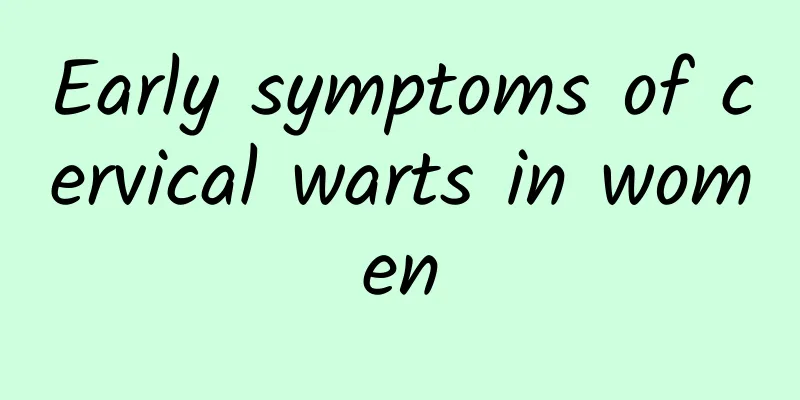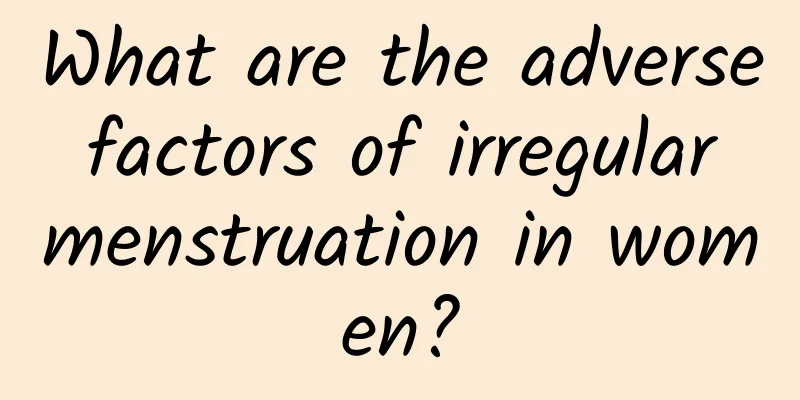What is the cause of functional uterine bleeding in adolescence?

|
What does functional uterine bleeding mean in adolescence? What is the cause of functional uterine bleeding in adolescence? After ovulation, a corpus luteum is formed in the ovary to synthesize estrogen and progesterone; hyperthyroidism or hypothyroidism in adolescence may be accompanied by functional uterine bleeding. When the thyroid function is hyperactive, the secretion of ovarian hormones increases, the menstrual cycle becomes shorter, or ovulation stops, the endometrium proliferates too long, and functional uterine bleeding occurs. Polycystic ovary syndrome may occur in adolescence, which is characterized by anovulation, manifested as amenorrhea or functional uterine bleeding. (1) Cause The causes of anovulatory functional uterine bleeding are different during adolescence and menopause. Most of the functional uterine bleeding during adolescence is due to the incomplete or delayed development of the hypothalamus-pituitary-ovarian axis, and the complete positive feedback regulation mechanism has not been established between the hypothalamus and the ovaries. The pituitary follicle-stimulating hormone (FSH) and luteinizing hormone (LH) promote the development of follicles and secrete estrogen, but the positive feedback of estrogen on the hypothalamus should not be able to form the FSH and LH peaks in the normal menstrual cycle. Therefore, although the ovaries develop and secrete estrogen under the action of follicle-stimulating hormone (LH) and luteinizing hormone (LH), the positive feedback of estrogen on the hypothalamus should not be able to form the FSH and LH peaks in the normal menstrual cycle. Therefore, when ovarian function declines, women's FSH and LH peaks will also lead to menopausal functional uterine bleeding. There are four reasons that can cause ovulatory dysfunctional uterine bleeding: 1. Luteal insufficiency. During the menstrual period, follicles develop and ovulate, but insufficient secretion of progesterone during the luteal phase or premature luteal failure can cause poor endometrial secretion. 2. The endometrium is not completely shed. That is, due to incomplete atrophy of the corpus luteum, estrogen and progesterone cannot drop rapidly, and the endometrium cannot be discharged on time due to hormonal imbalance, resulting in prolonged bleeding period and increased blood volume, which is also called incomplete atrophy of the corpus luteum. 3. Endometrial repair is prolonged. After the endometrium is exfoliated during menstruation, the next round of new follicles develop slowly or poorly, and the estrogen secreted is insufficient, so that the endometrium cannot regenerate and repair as planned, and the menstruation is prolonged. 4. Ovulation bleeding. Because of the brief drop in hormones during ovulation, the endometrium loses the support of supporting hormones, resulting in withdrawal bleeding caused by partial shedding of the endometrium. When estrogen secretion is sufficient, the endometrium will recover and stop. ㈡Pathogenesis. When the follicle develops and synthesizes estrogen, the endometrium will proliferate; after ovulation, the ovary will form a corpus luteum and synthesize estrogen and progesterone; and progesterone will stimulate the proliferation of the endometrium. About 14 days after ovulation, estrogen and progesterone will no longer be secreted. If the discharged egg is not fertilized, wrinkles, spiral artery contraction, slow venous return and endometrial ischemia and necrosis will occur, resulting in the shedding of the functional layer of the endometrium, and problems will occur during menstruation. At the same time, the spiral artery of the endometrium is thrombotic and the amount of bleeding is reduced. A new follicular cycle begins, and estrogen is secreted to repair the endometrium and stop bleeding. Therefore, the amount of bleeding in normal menstruation is relatively stable and stops bleeding naturally. If there is no ovulation, the ovaries do not synthesize progesterone, and the endometrium proliferates under the action of a single estrogen. When the estrogen level can no longer maintain the thickened endometrium, local shedding bleeding (bleeding) will occur. After one part is repaired, another part will shed again, causing continuous bleeding. The broken ends of the spiral arteries in the endometrium do not contract, causing the bleeding volume to no longer contract, resulting in increased bleeding. Women generally do not ovulate during menarche, so functional uterine bleeding can occur 2 to 3 years after menarche, or 2 to 3 years after regular menstruation. Hyperthyroidism or hyperthyroidism in adolescents may be accompanied by functional uterine bleeding. The results show that when the thyroid function is reduced, the metabolic rate of ovarian cells decreases, the follicles are poorly developed, and the secretion of estrogen is insufficient. In vivo observations have found that when the thyroid function is low, the increase in blood TSH will affect the production of gonadotropin, leading to anovulation or luteal insufficiency. When hyperthyroidism occurs, the secretion of ovarian hormones increases, the menstrual cycle is shortened or ovulation stops, the endometrium proliferates too long, and functional uterine bleeding occurs. PCOS can occur during adolescence and is characterized by anovulation, amenorrhea or functional uterine bleeding. Some cases are complicated by hirsutism, obesity and/or bilateral ovarian enlargement. In adolescents with adrenal hyperplasia, functional uterine bleeding may also occur due to elevated androgen levels and ovulation disorders. Most adolescent functional uterine bleeding is caused by hypoplastic hypothalamus-pituitary-ovarian axis. Psychological stimulation or disease can easily lead to functional uterine bleeding. |
<<: Treatment methods for bacterial vaginosis Bacterial vaginosis can lead to 6 complications
>>: How to avoid pain during curettage? Why does curettage hurt?
Recommend
What causes pelvic effusion?
Pelvic effusion may be caused by physiological fa...
What is bacterial vaginosis
Bacterial vaginitis refers to a disease caused by...
Do you know what symptoms of vulvar leukoplakia?
What are the symptoms of vulvar leukoplakia? What...
Can adnexitis after abortion be cured?
Can adnexitis after abortion be cured? Female rep...
What is the reason for endometrial shedding during non-menstrual period?
Endometrial shedding is a condition in which the ...
What causes cervical erosion?
Cervical erosion refers to ectopia of the cervica...
7 ways to stay active and fall in love with exercise
I hope you’re not lying on the couch, eating pota...
Conventional methods for the diagnosis of threatened abortion
Routine diagnosis of threatened abortion is very ...
Experts explain the symptoms of pelvic inflammatory disease
There are many kinds of gynecological diseases, a...
Let’s find out together: Are multiple ovarian cysts serious?
Multiple ovarian cysts are a type of ovarian cyst...
Treatment of ovarian cysts in women
Ovarian cysts are a very serious gynecological di...
What are the principles of prevention of adnexitis?
With the development of society, the number of pa...
A brief introduction to various treatment methods for uterine fibroids
Women are also very likely to suffer from gynecol...
Common medication misunderstandings in patients with cervical precancerous lesions
As our quality of life continues to improve, our ...
What are the symptoms of uterine fibroids and what are the treatments for uterine fibroids
1. How do uterine fibroids occur? Traditional Chi...









